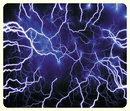Computing Across the Physics Curriculum
[an error occurred while processing this directive]
[an error occurred while processing this directive]
Electricity & Magnetism

You must be a registered user to access the downloads.
These modules were designed/constructed based on the text:
Introduction to Electrodynamics, by David J. Griffiths
-
Cartesian and Polar Vectors: In physics, students must be comfortable in working with a variety of coordinate systems. In dealing with Cartesian and polar coordinate systems, students have difficulty differentiating between unit vectors that have fixed direction and those that vary with the vector's direction.
-
Potential and Electric Fields: Given a distribution of point charges, the potential and electric field can be calculated directly. The connection between scalar and vector fields is made not only in electrostatics, but in other branches of physics, most notably in gravitation. Thus, the skills that students develop here can be directly applied to other areas.
-
Laplace Equation: For a given configuration of potentials, the potential throughout the remaining space can be obtained by solving the Laplace equation. This equation is encounter many times in electrostatics, with either Dirichlet or Neumann boundary conditions. Analytic solutions involve series expansions using complete, orthonormal, basis functions such as trigonometric or hyperbolic functions.
-
Maximum Power: In an electric circuit, the power that is delivered to a circuit element can be calculated from Ohm's law and the equation for power. When introduced to Ohm's law, the battery resistance is usually neglected. Here, it is incorporated into Ohm's law, and the power delivered to the load is found.
-
Electric and Magnetic Fields: Given the electric and magnetic fields, many quantities can be determined, such as the Poynting vector, electromagnetic energy density, and the speed of light.
-
Plane Waves: The electric and magnetic fields of a plane wave traveling in phase along a given axis in a vacuum oscillate perpendicular to each other and to the axis of propagation.
-
Transmission Coefficient: Light that passes from one medium to another results in a reflected wave. The amount of reflection and transmission depends on the index of refraction of the material and the surrounding layers. For light that passes from a fish tank, through glass, and into air, the resulting transmitted wave depends on the three indices of refraction, the frequency of light, and the thickness of the glass.
-
Transmission and Reflection Coefficients: Light that passes from one medium to another results in a reflected wave. The amount of reflection and transmission depends on the indices of refraction as well as the incident angle. For light that passes from one medium into another, the reflection and transmission coefficients are obtained through the Fresnel equations.
-
Electric Dipole: For an oscillating electric dipole, the pointing vector contains position, angle, and time dependence. The time dependence can be integrated out by averaging over a complete cycle. The resulting angle dependence is axis-symmetric, taking the form of a donut, which can be difficult for students to understand.
-
Lorentz Force and Particle Trajectory: A charged particle moving in electric and magnetic fields experiences a Lorentz force which is dependent on the particle's velocity. The Lorentz force is often studied as it offers a connection between electromagnetics and classical mechanics studies.
-
Relativistic Gamma Factor: The gamma factor is important when dealing with speeds that are a sizable fraction of the speed of light. This occurs in electromagnetism and in relativistic mechanics.
-
Relativistic Kinetic Energy: The classical and relativistic expressions for kinetic energy are generally consistent when dealing with speeds much less than the speed of light. As v grows to a sizable fraction of c, the deviation between the two can be quite sizable.
